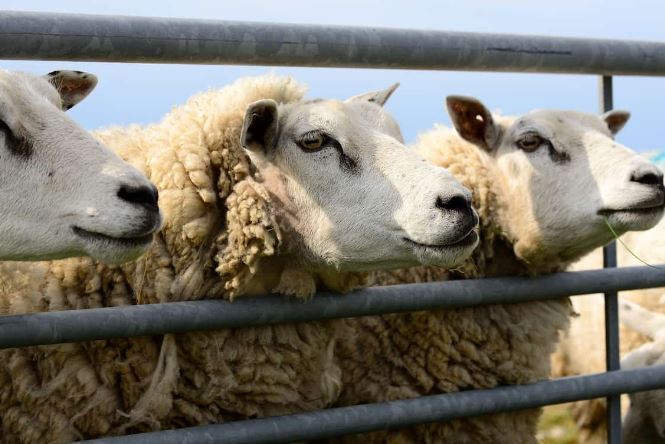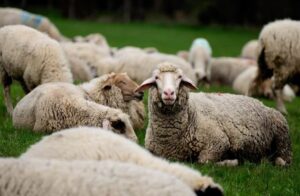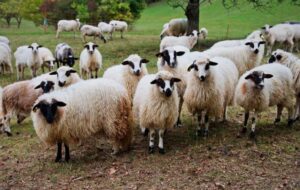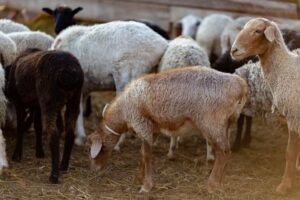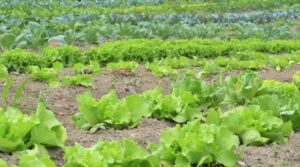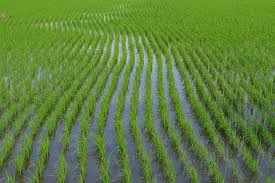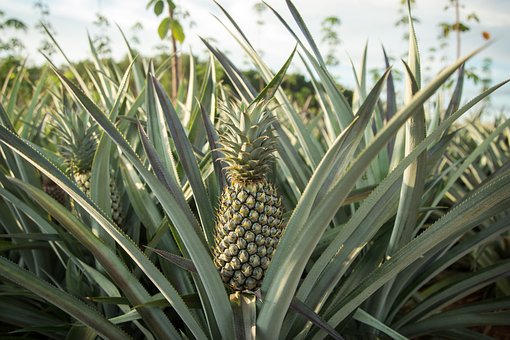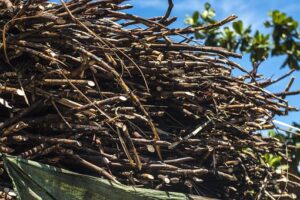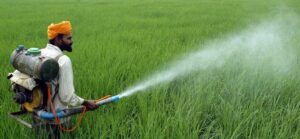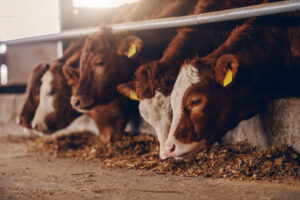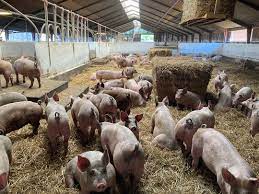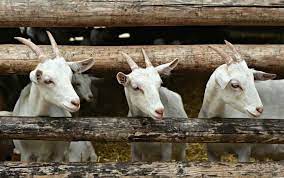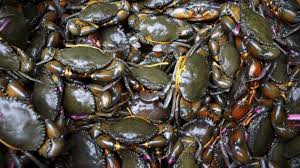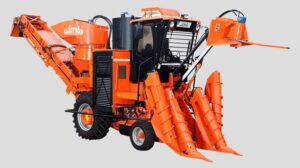Sheep Farming in the Netherlands: The Dutch agricultural industry includes sheep farming as a significant sector. There are currently about 1.5 million sheep in the Netherlands, which has a long history of sheep farming. The southern and eastern provinces of the Netherlands are home to the majority of the sheep.

How to start sheep farming in the Netherlands
In the Netherlands, is sheep farming profitable?
The high demand for wool is one of the key factors that makes sheep farming viable in the Netherlands. Many textile businesses that use wool to create everything from garments to carpets are located in the Netherlands. As a result, farmers can always supply the high-quality wool that is required. Also, sheep farming is a good fit for the Dutch climate. Sheep thrive in the cool, moist climate, and there are lots of places to graze thanks to the large grasslands.
As a result, farmers can further boost their profitability by saving money on feeding and housing their flock. Of course, sheep farming has its risks, just like any other type of farming. The likelihood of illness outbreaks among the flock poses the biggest concern. Farmers can, however, reduce this danger and increase their chances of success by taking the necessary steps and spending money on high-quality livestock.
Depending on the size of the property, sheep farming can be profitable or not. Because their production expenses per unit are higher, smaller farms are less profitable than larger ones. Nevertheless, many small-scale sheep farms in the Netherlands continue to turn a profit because of effective production techniques and specialist marketing. Sheep farming has a long past in the nation, and it makes a sizeable economic contribution. Due to the growing demand for wool and other sheep products in recent years, sheep farming has become more profitable.
The Netherlands’ zero-grazing sheep husbandry
The Netherlands uses a practise known as zero grazing to raise livestock. This means that the animals are kept in a covered shed where they are given a diet of hay and other dry feeds and are not permitted to graze on any pastures or grasslands. The primary advantage of the zero-grazing system is that because the sheep are not in touch with wild animals or contaminated vegetation, the risk of disease transmission between them is decreased.
Due to the fact that all of the animals are contained in one area, farmers can carefully watch the health and nutrition of their flock. However, because it takes more labour and animal feed than conventional methods, zero-grazing sheep farming can be more expensive. If the animals are not given enough stimulus in their surroundings, they may also become stressed and depressed.
Beginner’s guide to Dutch sheep herding
There are some things you should know if you plan to establish a sheep farm in the Netherlands. First off, compared to nations like New Zealand or Australia, sheep herding is less prevalent in the Netherlands. Wool and meat from livestock continue to be in demand, though. You need a plot of land big enough to house your flock if you want to establish a sheep farm in the Netherlands.
You’ll also need to construct livestock pens and shelters. Last but not least, it’s critical to make sure your fences are high and durable enough to prevent your sheep from fleeing. Choosing the best breed of sheep for your farm is the next stage. Research the various sheep breeds to find the one that best suits your climate and variety of grass. Purchase some ewes (female livestock) and rams once you’ve decided on a breed (male sheep).
It’s time to begin breeding your herd right away. Summer is the ideal season for breeding sheep. The lambs must be fed and cared for after birth until they are mature enough to be sold. Sheep farming can be a financially and personally fulfilling endeavour. It can be a great method to support yourself and your family if you’re willing to work hard.
places in the Netherlands where sheep are raised
Sheep farming has a lengthy history in the Netherlands. The Romans introduced the first sheep to the nation, and they have been raised here ever since. There are many various kinds of sheep farms in the Netherlands, and they play a significant role in the country’s economy. Zeeland, Groningen, North Holland, and South Holland are the primary sheep-growing regions in the Netherlands. The eastern region of the nation also has a number of sheep pastures.
Although there are some urban sheep farms in the Netherlands, the majority are situated in rural regions. It plays a significant economic role in the Netherlands’ rural regions. Sheep give us milk, fleece, and meat. They also contribute to the upkeep of these regions’ landscapes. Grazing sheep keeps meadows in good condition and keeps weeds from taking over. Both farmers and animals profit from this.

The benefits of sheep farming in the Netherlands
The Netherlands has a significant farming industry. It contributes significantly to the Dutch farming sector and offers numerous advantages to the nation.
1. The Netherlands has a very fruitful and efficient sheep farming industry. The Dutch farmers have gained significant experience and understanding in this field, and the country’s climate and landscape are ideal for sheep farming. The Netherlands’ sheep farms are able to produce high-quality wool and meat at a fair price as a consequence.
2. The Dutch economy gains from this effectiveness in a number of ways. For starters, it lowers the price of sheep goods for Dutch consumers. Furthermore, it makes it possible for the Netherlands to sell sheep goods abroad at a profit. Additionally, it serves to develop the economy in rural areas of the nation.
3.Sheep farming has advantageous effects on the environment in addition to these fiscal advantages. Sheep grazing can aid in the preservation of grassland environments, and wool production uses a lot less energy than the manufacture of synthetic fibres. Sheep farming can therefore greatly support sustainable development in the Netherlands.
The Netherlands has sheep farms.
In the Netherlands, sheep of many various breeds are raised for food. The most popular species is the Texel, which is a breed with two uses: producing wool and meat. Dutch Spelsau, Drenthe Heath, Texel sheep, Zwartbles, Blue Texel sheep, Beltex, Suffolk, Charollais, Dutch Landrace, Ijsselmeer, East Friesian, and Lleyn are some other well-known varieties. The majority of sheep farms are located in the region of Zeeland, followed by South Holland and North Brabant.
Read More:Key Rules to Improve Feed Conversion Ratio (FCR) in Sheep: For Profitable Sheep Farming
The Netherlands’ approach to managing sheep grazing
Sheep are usually fed a diet of hay, grass, and grains in the Netherlands. Their preferred food varies on the time of year and what is readily available. Sheep feed on grass and clover in the summer. They are fed hay in the winter months when there is less grass accessible. When sheep are lactating or pregnant, grain is given to them. Food requirements for sheep vary with age, weight, and health. An adult sheep in good condition consumes about 2% of its body weight in food every day.
A 100-pound adult sheep in good condition will, for instance, consume about 2 pounds of food each day. Sheep can obtain clean water. Each day, they will consume water equal to about 0.5% of their total weight. For instance, a 100-pound, robust adult sheep drinks about 0.5 pounds of water every day.
Sheep farming business plan in the Netherlands
Keep a few things in mind if you want to establish a sheep farming business in the Netherlands. The Netherlands is a tiny nation with scant farmland, to start. It follows that there will be fierce rivalry for pasture and hay fields, and you must be able to obtain enough land for your flock. Second, the Netherlands has a humid environment that can make it difficult to raise sheep. You must make sure your sheep have access to dry bedding and shelter, as well as the best available protection from the elements.
Thirdly, you must be able to contend with established companies because the Dutch sheep sector is quite developed. This entails developing a thorough business strategy and providing something distinctive or superior to what is already on the market. And finally, managing a prosperous sheep farm requires perseverance, hard work, and devotion. Starting a sheep farming enterprise in the Netherlands can be lucrative if you are prepared for these difficulties. The measures to take in the Netherlands to begin a sheep farming business are listed below;
- Decide if you want to raise sheep for meat, wool, or both.
- Choose the right breed of sheep for your purposes.
- Obtain the necessary licenses and permits.
- Build or purchase appropriate housing and fencing for your sheep.
- Acquire a healthy flock of sheep.
- Implement a sound feeding and grazing plan.
- Provide adequate health care for your flock.
- Keep good records of your flock management practices.
- Market your meat, wool, or both as desired.
- Enjoy the satisfaction that comes from being a successful sheep farmer.
Sheep farming types in the Netherlands
The Netherlands primarily practises extensive, semi-intensive, and intensive sheep herding.
1.The most traditional and typical form of farming in the Netherlands is extensive sheep farming. Sheep are grazed on vast areas of territory, usually on heather or unimproved pasture. This kind of sheep farming requires a lot of labour but is reasonably inexpensive.
2.Sheep are grazed on smaller plots of land during semi-intensive sheep husbandry, which is more intensive and frequently uses supplemental feed. While more expensive and labor-intensive than vast sheep farming, this method can produce higher yields.
3. Intensive sheep farming, which confines livestock and frequently uses artificial lighting and heating, is the most intensive type of sheep farming. Although it is very expensive and labor-intensive, this form of sheep farming can produce extremely high yields.
Commercial sheep herding is practised in the Netherlands.
Since it only started in earnest in the early 1990s, commercial sheep farming in the Netherlands is a relatively new business. However, it has rapidly grown to be a significant contributor to the Dutch economy, with sheep meat and wool making up a sizable portion of exports.
In the Netherlands, there are currently more than 700 industrial sheep farms with a flock size of about 200,000 animals. The majority of these sheep farms are found in the southern region of Limburg, where the climate is ideal for caring for sheep. The goal of the Dutch sheep business is to export high-quality meat and wool products.

Netherlands loans for sheep grazing
Sheep herding is a common type of agriculture in the Netherlands. Dutch sheep producers frequently take out loans to fund their operations. In the Netherlands, there are many various kinds of loans for sheep farming. A company loan is the most typical kind of loan. Loans for businesses can be used to pay for the acquisition of property, equipment, and other essential costs.
Government grants are another kind of debt that Dutch farmers frequently use. Government grants are frequently offered for initiatives that advance sustainable agriculture or the ecosystem. Banks, credit unions, and other financial organisations in the Netherlands offer financing for sheep farming. Before selecting a lending organisation, farmers should evaluate interest rates and terms.
The benefits of sheep farming in the Netherlands
The Netherlands has a long-standing history of sheep farming, which is advantageous to both the nation and its citizens. The sheep produce milk for making cheese, meat for human consumption, and wool for use in clothing and other goods. By feeding on grass and other plants, they also contribute to maintaining the landscape’s cleanliness. The majority of the small family farms that make up the Dutch sheep industry are usually run by husband-and-wife teams.
Because of this operation, the farmers and their animals can have a close connection that leads to better care and better-quality produce. Sustainable land management is another opportunity presented by sheep herding. Sheep, when properly managed, can reduce soil erosion and boost biodiversity on the grazing area they are on. Due to these reasons, sheep farming is a significant sector of the Dutch economy and society. Furthermore, it is a traditional way of living that is advantageous to its practitioners.
The Netherlands’ issues with sheep herding
1. The illness is a significant issue for Dutch sheep producers. Sheep are susceptible to a number of ailments, including foot rot, scabs, and parasites. A bacterial illness called foot rot can cause lameness in sheep by affecting their feet. Itching and hair loss are side effects of the infectious skin condition scab. Anemia can be brought on by lice, parasitic insects that feast on the blood of sheep.
2. The Netherlands’ sheep producers also struggle with parasites. The most prevalent form of parasite that affects sheep is gastrointestinal worms. These worms, which are gut-dwellers in livestock, can lead to anaemia, diarrhoea, and weight loss.
3. Another issue that could impact sheep herding in the Netherlands is predation. In the Netherlands, foxes are the most frequent predator of livestock. Cats, canines, and raptors are some other predators.
4.The Netherlands’ sheep herding industry may be impacted by the weather. Sheep are especially susceptible to frigid temperatures and snowfall. Sheep may perish in severe weather circumstances from exposure or starvation.

Sheep farming set up cost in the Netherlands
If you want to establish a sheep farm from scratch in the Netherlands, the initial setup costs could be quite high. For your farm, you’ll need to buy or rent property, and you’ll also need to construct the proper shelters for your sheep. Depending on the size and location of your farm, the cost of land and building will change. Although the original investment may be sizable, once your farm is operational, the ongoing costs are fairly minimal. An effective management strategy can make a sheep farm lucrative.
In the Netherlands, a sheep farming setting typically costs between €1,500 and €2,000. This entails investing in livestock, fencing, and other tools. If you choose to purchase organic sheep or use a different form of housing besides a traditional Dutch barn, the cost of starting a sheep farm in the Netherlands may be higher.
The difficulties faced by livestock farmers in the Netherlands
The amount of land required for grazing: Sheep, need a lot of space to graze, and in the Netherlands, the land is expensive and often in short supply. This means that farmers must be creative in how they use their land and often have to supplement grazing with hay or other feed.
Dealing with predators: Foxes and other predators can be a problem for sheep farmers in the Netherlands. As a result, farmers must protect their flocks by using guard dogs or electric fences.
The weather: The Netherlands can have extreme weather conditions, from hot summers to cold winters. This can make it difficult to keep sheep comfortable and healthy. Therefore, farmers must be prepared for all kinds of weather conditions and know how to care for their sheep.
Conclusion
Although there is a sizable wool industry, the majority of sheep farming in the Netherlands concentrates on producing meat. Sheep farming is a very lucrative industry in the Netherlands, according to the Dutch Minister of Agriculture. Sheep herding has been practised in the nation for a very long time, and it makes a sizable economic contribution. Due to the growing demand for wool and other sheep products, sheep farming has become more profitable in recent years.

